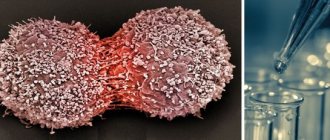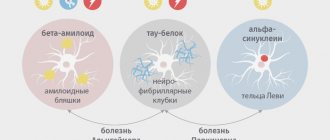Pathogenetic mechanisms of development of vibration disease
Its modern course is characterized by multivariate symptoms, when the process gradually involves:
- vessels;
- nerves;
- skeletal muscles.
Clinical symptoms develop gradually. Much depends on how long the vibration affected the person and what its parameters were. The combination of vibration with other factors such as cooling, dynamic loads and noise is also important.
The impact of vibration in various types of production causes the appearance of a complex symptomatic complex, which subsequently forms a number of serious disorders of a neurohumoral, reflex and neurohormonal nature. When vascular tone malfunctions, circulatory disorders appear in different parts of the vascular bed. A common phenomenon with vibration disease is peripheral angiodystonic syndrome (or Raynaud's syndrome). It is accompanied by periodic vascular spasms. In addition to peripheral vasospasm, patients also experience cerebral vascular phenomena.
All types of vascular dysfunction are sooner or later fraught with changes in transcapillary exchange. Hypoxia in the tissues begins to progress, causing serious disturbances in their trophism (nutrition). When the nutrition of nerve cells and their fibers located on the periphery is disrupted, a number of pathological changes occur in them:
- demyelination;
- destruction of axial cylinders.
As a result, a phenomenon called sensory polyneuropathy develops. It is a kind of marker of vibrational disease. In the initial stage, the upper extremities suffer from a type of mononeuropathy. The main manifestations are pathology of the median nerve and carpal tunnel syndrome. Further exposure to vibration can lead to serious disorders of autonomic functions and trophism.
Symptoms of vibration disease
The clinical symptoms of vibration disease consist of peripheral neurovascular disorders and trophic disorders in the muscles and bones of the limbs and shoulder girdle. The disease develops after 3-15 years of working in vibration conditions. The main clinical syndromes are peripheral angiodystonic syndrome, acrospasm syndrome (Raynaud's syndrome) and sensory (vegetative-sensory) polyneuropathy of the extremities (arms or legs depending on exposure to local or general vibration). Characteristic complaints are chilliness, paresthesia of the limbs, changes in the color of the skin of the fingers when cooling (they turn white or become bluish), decreased strength in the hands, cramps in the hands, feet and calf muscles. Hypothermia, cyanosis and hyperhidrosis of the extremities, trophic changes in the skin (hyperkeratosis) and nails (thickening, deformation or thinning of the nail plates), swelling or pastiness of the hands with stiffness of the fingers are observed. As vibration disease , the frequency and duration of vasospasms increase. When exposed to general vibration, there is a decrease in the pulsation of the arteries on the back of the feet and legs. A characteristic symptom is an increase in the threshold of vibration, pain, temperature, and less often tactile sensitivity. Sensory impairment is polyneuritic in nature. As the disease progresses, segmental hypalgesia and dystrophic disorders of the musculoskeletal system are revealed. Along with pain, thickening, heaviness, and focal crepitus are detected in the muscles of the limbs and shoulder girdle. With long-term (15 years or more) exposure to general vibration (most often among tractor drivers, bulldozer and excavator operators ), dystrophic changes in the spine (osteochondrosis, deforming osteoarthritis of the lumbosacral, less often of the cervicothoracic region) with secondary radicular syndrome often occur.
Peripheral neurovascular and trophic disorders are often combined with functional changes in the central nervous system, which manifest themselves in the form of cerebral angio-dystonic or neurasthenic syndrome. These disorders are most pronounced in vibration disease , caused by exposure to general vibration. At the same time, patients complain of fatigue, dizziness, headaches, intolerance to travel in transport,
Conventionally, there are three degrees of vibration disease :
- I degree - initial manifestations;
- I degree - moderately expressed manifestations;
- III degree - pronounced manifestations.
Stage I vibration disease is asymptomatic. Patients complain of mild pain, chilliness, and paresthesia of the hands. There are mild sensitivity disorders in the terminal phalanges (hyper- or hypalgesia), a mild decrease in vibration sensitivity, a slow recovery of the skin temperature of the fingers after cooling, and a change in capillary tone. Angiospasms are rare.
With vibration disease of degree II, the intensity and frequency of manifestations of the disease increase. Sensitivity disorders, especially vibration sensitivity, become more pronounced.
Vibration disease of the third degree is rare and is characterized by severe vasomotor and trophic disturbances. Peripheral vasospasms become frequent. The intensity of sensitivity disorders, paresthesia and pain increases. Vibration sensitivity is sharply reduced, hypoesthesia is segmental in nature. Symptoms of asthenia are expressed.
The diagnosis is established on the basis of anamnesis, sanitary and hygienic characteristics of working conditions, a set of clinical manifestations, as well as indicators of microcirculation, cold testing, determination of the threshold of vibration and pain sensitivity, skin thermometry, etc. During capillaroscopy of the nail bed, spastic atony of the capillaries is observed, less often their atony or spasm . Radiographs reveal proliferation of tubercles of the nail phalanges, thickening of the diaphysis and compact substance of the tubular bones, thickening of the trabeculae of the spongy substance, metaepiphyses of the phalanges, metacarpal and metatarsal bones.
Differential diagnosis is carried out with Raynaud's disease and other angiotrophoneuroses, syringomyelia, polyneuropathies (alcoholic, diabetic, etc.), vertebrogenic pathology of the nervous system.
Pain in the symptoms of vibration disease
Pain due to vibration disease is divided into several types:
- somatogenic. It is due to the fact that a person’s tissue is damaged;
- neuropathic. Such pain occurs when the nervous system is disrupted, which is a primary dysfunction;
- psychogenic. Sometimes vibration disease is very severe, with accompanying mental disorders.
The pain syndrome itself can have many causes, combining the symptoms of all of the listed types of pain, often caused by an ischemic factor.
Peripheral vascular dystonia is characterized by a number of typical symptoms in the form of pain in the upper (later in the lower) extremities with an accompanying feeling of numbness. Pain and discomfort intensify in cold weather or exposure to any cold factor.
One of the typical symptoms in this case is paroxysmal “whitening” of the fingers and toes, after which the limbs acquire a pronounced cyanotic tint, then turn sharply red. Manifestations are accompanied by pain. This phenomenon, which occurs during vibration disease, is called Raynaud's syndrome.
If we talk about sensory polyneuropathies that have a vibrational origin, they proceed according to the type of classical neuropathies. Patients describe the pain as aching or aching. Its location is the distal areas of the arms and legs. The sensations are accompanied by paresthesia, which occurs spontaneously and unexpectedly. The pain syndrome itself is more pronounced early in the morning or at night, at the end of the working day.
Patients note that after they resume contact with the vibration instruments, the pain subsides within 10-15 minutes. This improvement in well-being is called a “working-in symptom.” With polyneuropathic phenomena, superficial sensitivity often suffers. It is accompanied by both positive and negative symptoms.
Free consultation on training issues
Our consultants are always ready to tell you about all the details!
Positive symptoms manifest themselves as:
- hyperaglesia or severe pain. At the same time, irritation of the innervation zones is minimal;
- allodynium. With allodynia, pain occurs when a person is exposed to non-painful stimuli of varying intensity (mechanical, temperature, etc.). Allodynia can also be caused by movement, light or sound;
- hyperpathies. They manifest themselves in the form of strong reactions to pain that occurs repeatedly. At the same time, intense pain does not go away after painful stimulation stops.
Among the negative symptoms, anesthesia is distinguished - that is, the absence of various types of sensitivity (to pain, to temperature and even to vibration).
One typical sign of vibration disease is carpal tunnel syndrome. The pain occurs at night, patients describe it as excruciating, reminiscent of a broken arm. Locations of pain: hand and first three fingers, with irradiation to the shoulder or forearm area. Sleep in such patients is usually severely disturbed.
Neuropathic pain is accompanied by a number of comorbid disorders. This is insomnia, anxiety or depression. Among the dystrophic changes, the development of diseases such as osteoporosis or myofibrosis, as well as other types of arthrosis, accompanied by muscle and joint pain, should be noted.
Vibration disease also causes lumbosacral radiculitis, localized in the roots of the lower spine. The location of the pain is the inner thigh. Over time, muscle tone in this area decreases, and the quadriceps femoris muscle atrophies. During a neurological examination, the doctor notes that the patient’s knee reflex is lost. Also, over time, the Achilles reflex fades due to compression of the spinal roots.
Vibration disease
Vibration disease from local vibration is observed mainly in workers who handle hand tools. It manifests itself as nagging, aching pain in the limbs that occurs during rest and at night. Characteristic is the disappearance of pain in the hands after 10-15 minutes from the start of working with a vibrating tool. Vibration disease from local vibration is accompanied by paresthesias, which accompany the pain syndrome and can be expressed in the feeling of goosebumps, tingling or numbness. There is increased chilliness of the hands or feet, paroxysmal whitening of the fingers, especially in cold weather or upon contact with cold water. For hewers, trimmers and workers of similar professions, whitening of the fingers is observed on the left hand, and for sanders, polishers, etc. - on the fingers of both hands.
One of the leading vibration diseases in the clinic are vascular disorders. They are manifested by angiodystonic syndrome, peripheral vasospasm, hemodynamic disorders in the form of changes in systolic and minute volume of blood circulation, a fall or rise in blood pressure, disturbances in vascular tone and peripheral resistance. Often vibration disease occurs with the clinical picture of neurocirculatory dystonia. In some cases, patients experience hidden hyperhidrosis.
Another leading syndrome that characterizes vibration disease from local vibration is polyneuropathy. In the early stages of the disease, it can manifest itself in the form of increased sensitivity (hyperesthesia), then in the form of a decrease in sensitivity (hypoesthesia). Moreover, depending on the severity of vibration disease, sensitivity disorders affect only the fingers or spread further to the hands or feet like “gloves” and “socks.” They are accompanied by trophic disorders in the form of hyperkeratosis, thickening and deformation of the nails, and less often - atrophy of the small muscles of the hand.
In addition to local symptoms, vibration disease from local vibration is accompanied by general malaise, increased irritability, sleep disturbance, dizziness, and diffuse headache. Possible heart pain, tachycardia, epigastric pain. Functional disorders of the central nervous system with which vibration disease occurs are manifested mainly by asthenia, neurasthenia and vegetative-vascular dystonia. Cerebral vasospasm may be observed. With combined exposure to vibration and noise, cochlear neuritis develops, leading to varying degrees of hearing loss.
Why is vibration disease dangerous?
Long-term exposure to vibration causes different damage to blood vessels and nerves in different people, so the symptoms vary among all patients with vibration disease (they also depend on whether the person experienced local or general vibrations). In some patients, symptoms of vibration disease appear not only in the hands, but also in other parts of the body, for example, pain in the legs or headaches, as well as vision problems and vegetative crises. Vibration disease can cause the development of additional symptoms, for example, insomnia or depression, tachycardia or vegetative-vascular dystonia, damage to the brain and bones, etc.
Causes of vibration disease
Vibration, to one degree or another, passes through any tissue of the body, but bone and nerve tissue are most susceptible to it. Due to the constant irritation of mechanoreceptors and Vater-Pacini bodies (which stimulate the formation of a nerve impulse), overstimulation of the nerve centers occurs, which leads to their dysfunction. For example, when exposed to low frequencies, autonomic disorders occur, the patient experiences nausea and motion sickness. With high-frequency vibration, norepinephrine is released, which leads to a narrowing of blood vessels. It is vasospasm that is the most dangerous manifestation of vibration disease, since it leads to disruption of trophic processes and, as a result, provokes angiotrophoneurosis.
Content
- Introduction
- The concept of “vibration disease”
- Pathogenesis
- Classification
- Vibration disease from exposure to local vibration
- Diagnosis
- Differential diagnosis
- Treatment
- Work ability examination
- Prevention
- Conclusion
- Bibliography
Symptoms of vibration disease
Symptoms depend on its type and degree of development. Some of the first major signs of the disease include: numbness in the hands and fingers, tingling in the hands and fingers, pain in the fingers in wet or cold environments, everyday pain in the hands and fingers, redness in the hands and fingers, loss of strength in the hands and fingers. It is not uncommon for people to lose the ability to perform tasks using fine motor skills (such as pressing buttons or picking up small objects). The further the disease develops, the more pronounced the symptoms become.
Treatment of vibration disease
Treatment for vibration disease includes medication, reflex therapy and physical therapy. Ganglion blockers, vasodilators, drugs that improve trophism and microcirculation (angioprotectors, ATP, phosphaden, complamin, trental, B vitamins) are indicated. Chamber galvanic baths with naftalan oil emulsion, electrophoresis of novocaine, heparin on the hand, diathermy, UHF and UV irradiation on the area of the cervical sympathetic nodes, diadynamic currents, ultrasound with hydrocortisone, massage, exercise therapy, acupuncture and laser therapy are effective. Mineral waters (radon, carbon dioxide, hydrogen sulfide, bromide baths) and mud applications have a beneficial effect.
Rational employment and treatment in most cases lead to the reverse development of the leading clinical manifestations of vibration disease, and sometimes to complete recovery.
The professional ability of patients with vibration disease of the 1st degree is usually preserved. To prevent the progression of the process, preventive treatment is carried out once a year with a temporary transfer (for 1-2 months) to work not associated with exposure to vibration, cooling and overexertion of the hands. During the next vacation, sanatorium-resort treatment is recommended (Pyatigorsk, Evpatoria, Nalchik, etc.). In case of vibration disease of II and III degrees, patients should be transferred to work that is not associated with exposure to vibration, cooling and overexertion of the hands; repeated courses of treatment are necessary. Patients with stage II vibration disease remain able to work, which allows them to be employed rationally. Young and middle-aged persons (under 45 years of age) who do not have additional qualifications are recommended to be sent for retraining. With vibration disease of the third degree, the professional and general working capacity of patients is persistently reduced.
Diagnosis of vibration disease
First of all, if vibration disease is suspected, a consultation with a neurologist is necessary. To diagnose the disease, the following are prescribed:
- electrocardiography (ECG)
- electroneuromyography
- thermography
- examine the condition of capillaries in the limbs
- carry out a cold test
If the symptoms are pronounced and the patient is exposed to vibrations for a long time, additional consultations with a cardiologist, gastroenterologist, ENT doctor, vascular surgeon, as well as additional specialized studies may be necessary.
Forecast and prevention of vibration disease
If you seek medical help in a timely manner and follow your doctor’s instructions, vibration disease has a positive prognosis, including complete recovery. However, for this it is necessary, in addition to the prescribed treatment, to comply with some preventive requirements:
- eliminate or sharply limit the influence of vibration in the labor process,
- avoid hypothermia (especially extremities),
- stop smoking and junk food (as causes of additional vasospasm or narrowing due to cholesterol deposition),
- introduce moderate aerobic exercise.
Fulfillment of these requirements will return the patient to his previous quality of life. At the same time, if no measures are taken, vibration disease can lead to disability.









